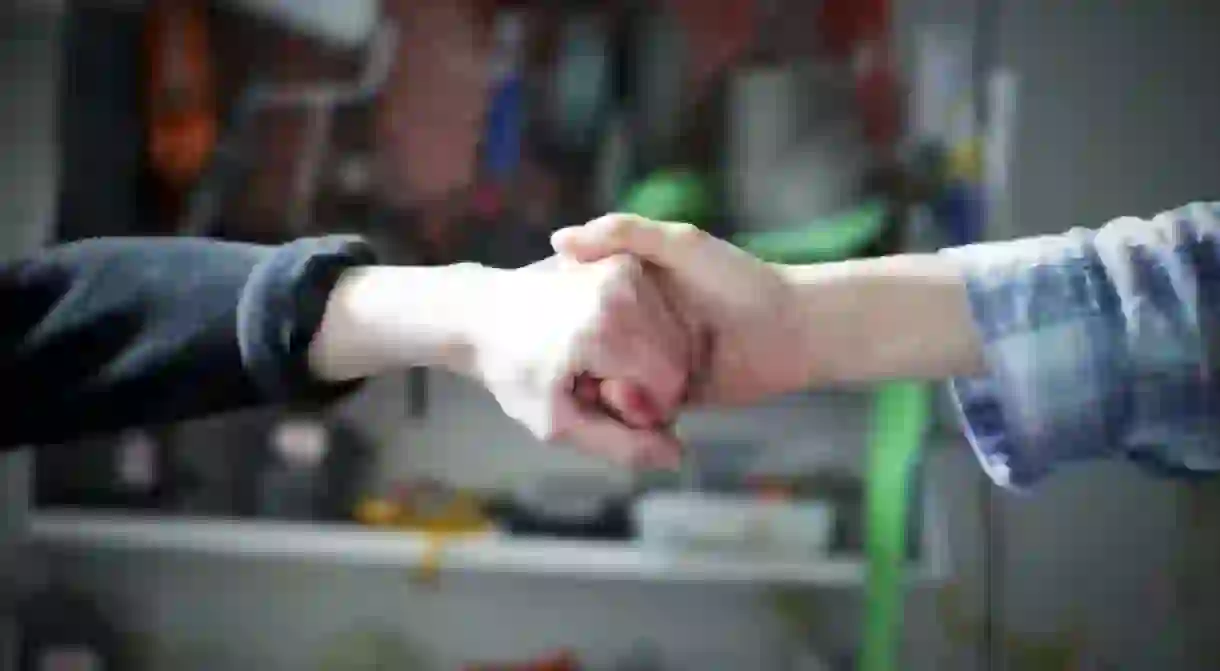Korean Greetings You Should Know

There’s a common saying that goes, “You don’t get a second chance to make a first impression.” Although it is true that many Koreans will happily forgive any accidental misdemeanours of etiquette, having some basic knowledge of Korean culture will ensure you get brownie points from the get-go. Here’s a quick guide to some of the most common Korean greetings.
Saying hello
The first greeting to know is how to say ‘Hello’. The most common use of ‘hello’ is the polite annyeong haseyo (애 우리 하세 요). It’s respectful and can be used in any context, from greeting an employee at a shop to meeting a friend’s grandparents. If speaking to a close friend or someone significantly younger, you might use the more informal annyeong (애영). But be careful – this is disrespectful to use when speaking to someone older or more senior. The most formal way of saying hello is annyeong hasimnikka (안녕하십니까), which is often used when someone addresses their boss or business partner. For foreigners, annyeong haseyo is always fine to use.
‘Pleased to meet you’ is another good greeting to know. In more formal contexts or when speaking with someone older, use mannaseo bangapseumnida (만나서 반갑습니다). Or, use bangapseumnida (반갑습니다) if the situation is more informal.
When entering a shop or hotel, you might hear staff say ‘Hwangyong hamnida (환영합니다)’, which means ‘Welcome’. Smile, nod your head or say ‘Annyeong haseyo’ in reply.
How are you?
To ask how someone is, one option is to say ‘Eotteohke jinaeseyo? (어떻게 지내세요?)’. The proper response 99% of the time is ‘Jaljinaeyo (잘지내요)’, which means ‘I’m fine’. You can also say ‘Jal jinaeseyo (잘 지내세요)’, which means either ‘How are you?’ if spoken as a question, or ‘Take care’ if said as a statement.
Did you eat?
This is a very important question to know, as Koreans use it like a greeting, similar to how ‘How are you?’ is used in English. Most of the time, the response is ‘Yes’ or ‘I’m fine’. The polite way to say ‘Have you eaten?’ is ‘shiksa hashutsuyo? (식사하셨어요?)’, to which the response is usually ‘ae haeseoyo (네 했어요)’ meaning, ‘Yes, I’ve eaten.’ You can also use the more informal ‘ap meogeoseoyo? (밥 먹었어요?)’, and the usual response is ‘nae meogeoseoyo (네 먹었어요).’

Saying thank you
Saying ‘Thank you’ in Korean can be a little confusing; there are a number of different ways to say it depending on who you are, who you’re talking to, what they’ve done, and so on. Luckily, you can usually get away with knowing just two ways: the more formal is kamsahamnida (감사합니다). This is appropriate to use in pretty much any context, although in a more informal setting, you might also hear ‘Gomo woyo (고마워요).’
Saying goodbye
The final thing to know is how to say ‘goodbye’. In Korean, this depends on whether you’re the one leaving. If you are, and the other person is staying (or has hosted you), you would say ‘Annyeonghi gyeseyo (안녕히 계세요)’, which translates to ‘Please stay well.’ If you’re the host, and you’re saying goodbye to someone else who is leaving, you would say ‘Annyeonghi gaseyo (안녕히 가세요)’, which means ‘Please go well’.
To say ‘goodbye’ more informally, when you’re the one leaving, use jal itsuh (잘 있어), which means ‘bye’, or ‘stay well’. If someone else is leaving, use Jal ga (잘 가), which means ‘go well’.
To say ‘Have a nice day’ in Korean, say, ‘Joheun halu doeseyo (좋은 하루 되세요)’. This is the only version, and it can be used whether you’re leaving or staying.













